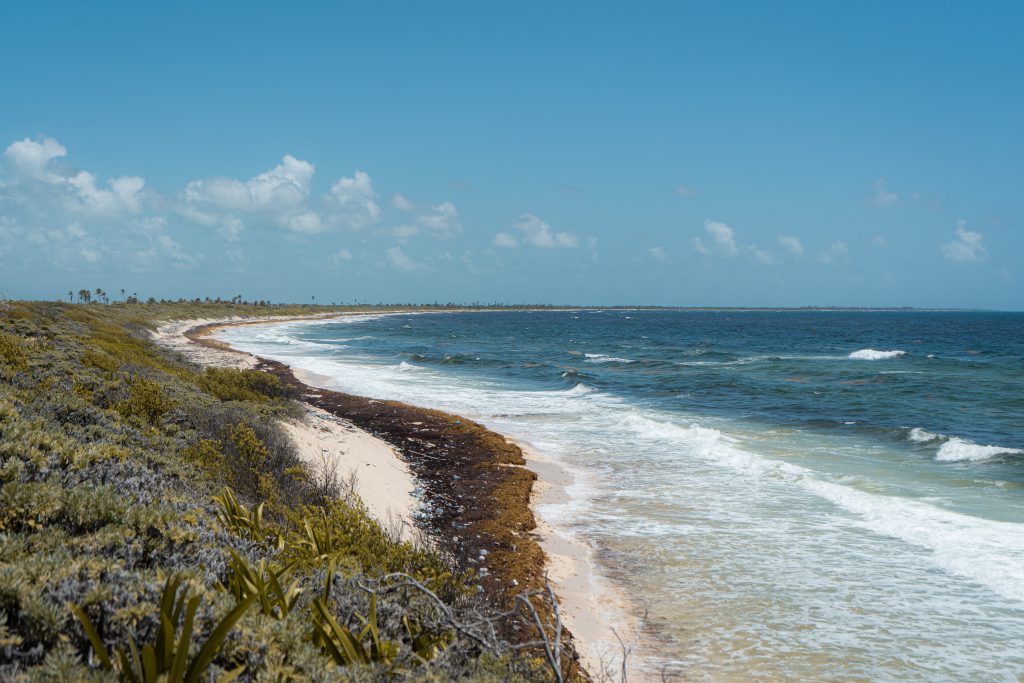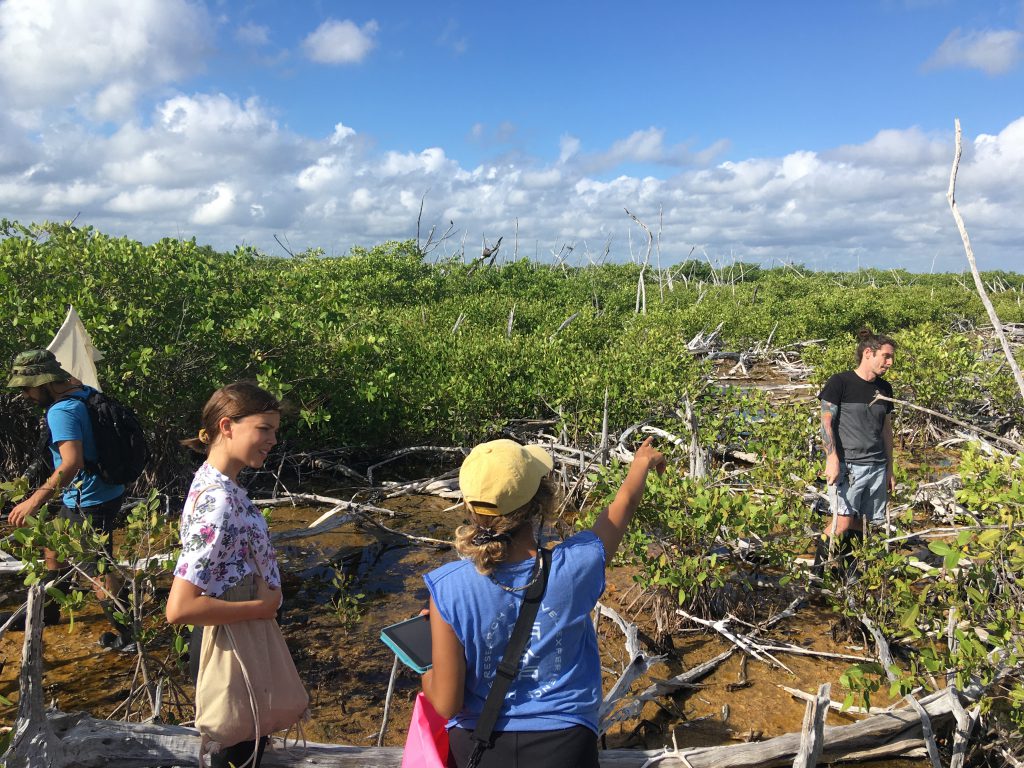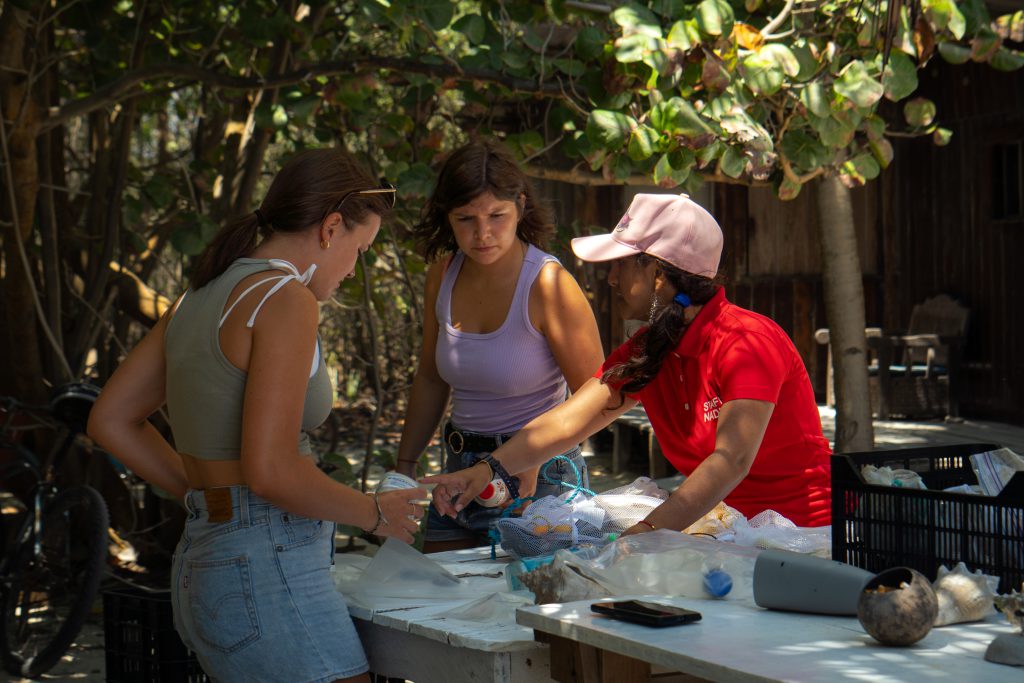The mangrove forest stands as a unique and vital ecosystem, thriving in the coastal zones of tropical regions. Uniquely adapted to extreme conditions of flooded soils with low nutrient content and high salinity, mangroves play a multifaceted role in sustaining life within their environment. Serving as both providers of food and habitat for land and sea creatures and offering protection from predators, mangroves contribute to the stability of fragile coastal areas. Beyond this, they act as nature’s defense against natural disasters such as tsunamis and hurricanes, while also mitigating the impacts of climate change, including rising sea levels. Remarkably efficient carbon sinks, mangroves trap sediment and play a crucial role in slowing down climate change.
Closelly connected to coral reefs, mangrove forests filter pollution, absorb nutrients, and stabilize the soil, creating an ideal environment for corals to thrive. As nurseries for marine organisms such as fish, crabs, and various invertebrates, mangroves foster the growth of crucial components of marine life. In turn, the structure of coral reefs provides a protective buffer for mangrove forests against the forces of waves, storms, and flooding.
The focus of our Mangrove and Dunes Conservation Program is to comprehend, protect, and restore the mangrove forest and coastal dunes of Mahahual. Urgent conservation measures are crucial to ensuring their sustainability, and our ongoing projects, particularly in monitoring and restoration, are key to securing the future of these essential ecosystems.
However, in the Mexican Caribbean, human activities are causing rapid degradation of mangroves and coastal dunes. Recognizing the importance of these ecosystems play in providing resources for both people and wildlife, as well as their significance in carbon sequestration and climate change mitigation, the preservation of mangroves becomes imperative. In our integrated vision and passive restoration efforts, the protection of reef-associated ecosystems in Mahahual, which encompasses mangroves, coastal dunes, and coral reefs, becomes crucial. The interconnectedness of these ecosystems is undeniable, with healthy mangrove forests and dunes contributing to the thriving existence of coral reefs through water filtration and serving as crucial nurseries for marine life.
Mangrove and Dunes Monitoring Project
The MARES Mangrove and Dunes Monitoring Project play a key role in gathering crucial data about the condition of these coastal ecosystems through meticulous, long-term assessments of vegetation cover, hydrology modeling, and organism and population monitoring. The acquired data provides valuable insights into the health of these ecosystems, guiding the implementation of conservation measures and restorative actions


Our team has undertaken diverse initiatives to enhance our understanding of these ecosystems and their significance for the community. The creation of geospatial tools for mangrove research and conservation has been a crucial point. Since 2017, we have been actively mapping the coastal habitat of Mahahual, which includes the extensive mangrove forest. This mapping not only aids in our research efforts but is also instrumental in the responsible development of our coastal town. Furthermore, we studied into the economic value of Mahahual’s mangrove. In 2020, we initiated a significant study to assess the value our local community attributes to the mangrove forest. This study showed valuable insights into the dynamics and relationships that the population shares with this vital ecosystem
Our efforts extend to the monitoring of flora and fauna, with the initiation of a study in 2020 focusing on the characterization of the mangrove forest through biodiversity monitoring. Simultaneously, we monitored the local turtle population nesting on the dunes, collecting data on demography, health, nesting and foraging grounds, and the challenges to conservation. Additionally, we developed models to map the topography and hydrology of the zone, providing a better understanding of water flow dynamics.
This ongoing research is expected to produce findings that will significantly contribute to the strategic planning of protection and restoration measures for these invaluable coastal ecosystems.


Mangrove & Dunes Restoration Project
The objective of the Mangrove & Dunes Restoration Project is to restore 5 hectares of mangrove forests within a span of 5 years, focusing on the restoration of forest hydrology and reforestation efforts. The initial phase involves comprehensive forensic studies of the restoration area, encompassing a diagnostic evaluation of the site slated for restoration. This includes an assessment of current and historical ecological and social characteristics, measuring diverse variables related to geomorphological and hydrological features, physicochemical parameters, and historical changes in the social and institutional context of the site.
The second phase will be to conduct restoration activities, which include desilting of water passages, construction of primary channels, and mangrove reforestation if deemed necessary. At present, we are actively collaborating with Mexican authorities and fellow researchers to pinpoint the optimal area for restoration in Mahahual. Our team has dedicated the past 5 years to researching the mangrove forest in the locality, establishing a profound understanding of this ecosystem to ensure that restoration actions align with both environmental and social prerequisites.
Furthermore, we are in the process of initiating a communication campaign, reaching out to landowners interested in contributing to the restoration of mangrove forest on their property, as well as engaging businesses interested on restoring or preventing erosion along their beaches. This multi-faceted approach reflects our commitment to a holistic restoration strategy that integrates scientific knowledge, environmental considerations, and community involvement.


Furthermore, we are in the process of initiating a communication campaign, reaching out to landowners interested in contributing to the restoration of mangrove forest on their property, as well as engaging businesses interested on restoring or preventing erosion along their beaches. This multi-faceted approach reflects our commitment to a holistic restoration strategy that integrates scientific knowledge, environmental considerations, and community involvement.